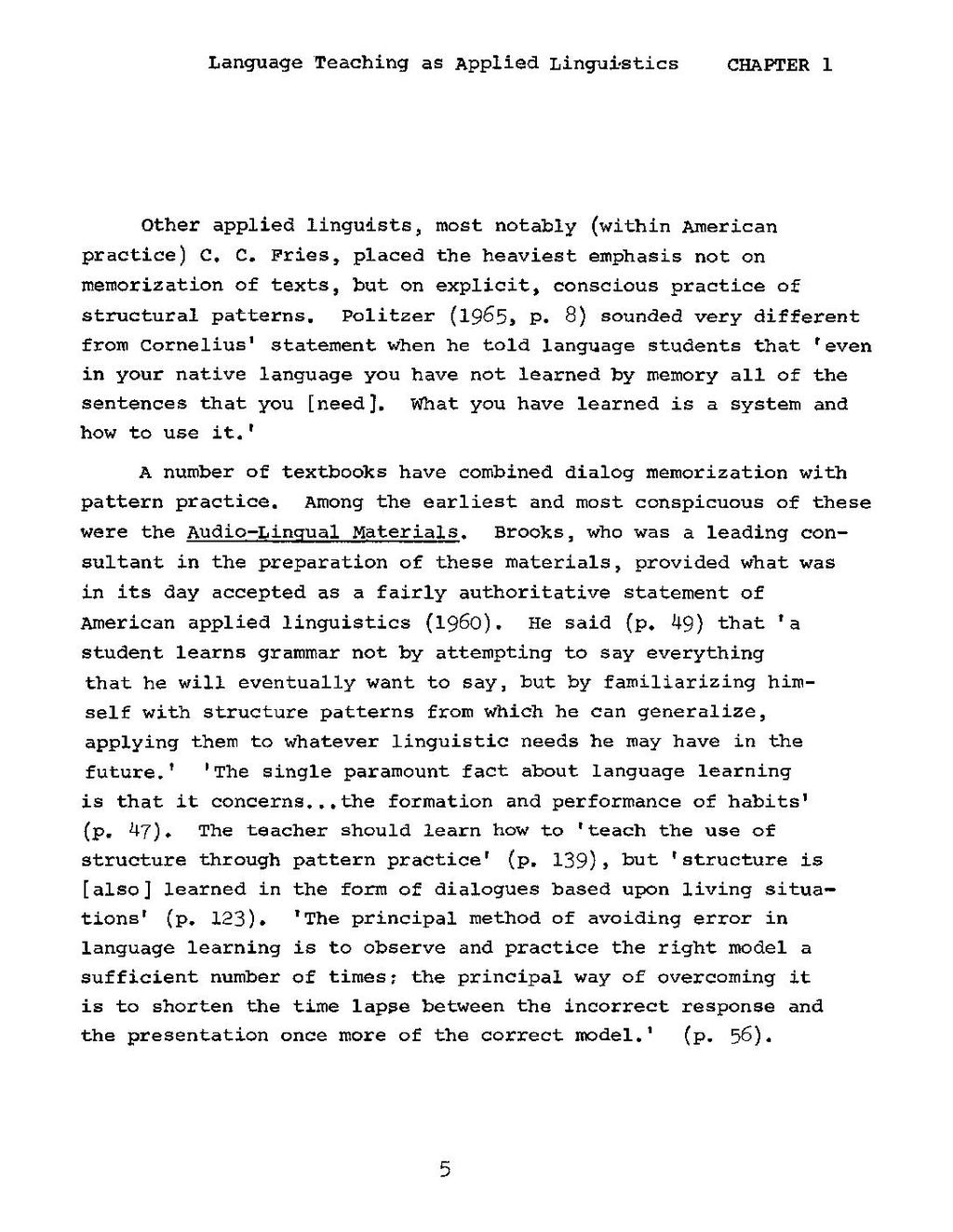Other applied linguists, most notably (within American practice) C. C. Fries, placed the heaviest emphasis not on memorization of texts, but on explicit, conscious practice of structural patterns. Politzer (1965, p. 8) sounded very different from Cornelius' statement when he told language students that 'even in your native language you have not learned by memory all of the sentences that you [need]. What you have learned is a system and how to use it.'
A number of textbooks have combined dialog memorization with pattern practice. Among the earliest and most conspicuous of these were the Audio-Lingual Materials. Brooks, who was a leading consultant in the preparation of these materials, provided what was in its day accepted as a fairly authoritative statement of American applied linguistics (1960). He said (p. 49) that 'a student learns grammar not by attempting to say everything that he will eventually want to say, but by familiarizing himself with structure patterns from which he can generalize, applying them to whatever linguistic needs he may have in the future.' 'The single paramount fact about language learning is that it concerns . . . the formation and performance of habits' (p. 47). The teacher should learn how to 'teach the use of structure through pattern practice' (p. 139), but 'structure is [also] learned in the form of dialogues based upon living situations' (p. 123). 'The principal method of avoiding error in language learning is to observe and practice the right model a sufficient number of times; the principal way of overcoming it is to shorten the time lapse between the incorrect response and the presentation once more of the correct model.' (p. 56).
5
